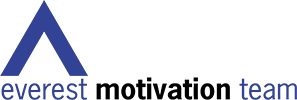By David Lim, ( published in the March 2011 issue of CFO Magazine)
You’ve been there before – a large national meeting organised by your company comprising a day or more of keynotes, presentations, regional or country updates. Now ask yourself this, within just one hour of a session o r presentation, describe three key things you learned that made a difference in your workplace, and how you will apply them. Chances, you’ll be feeling a bit sheepish because you can’t recall a single distinct call for action, new idea or action plan that you want to implement.
I deliver up to 70 leadership keynotes a year for client conferences, and have been invited to such events in 45 cities and 24 countries, and I’ve seen the good, the bad and the ugly.
The reality of meetings and finances is that most stakeholders haven’t worked out specifically, what they want as a Return on Event (or ROE) for the meeting, and how they will measure it, let alone decide on which metric to use.
As a CFO, your are guardians of not only the revenue flows of the organisations, but also the human capital flow, expressed in man-hours gained, lost or leveraged. 100 of your key staff sitting in a poorly positioned presentation, delivered in a mind-numbing fashion is 100-man hours wasted or, almost TWO weeks of a single executive’s time wasted from a session whose messages failed to stick. Inspire or mandate a call for action.
So here are some ideas for you to make you be more interested in having a say how an organisation spends for a meeting and well as get a ROE that matter to them.
1) People think with logic but act on emotion
We think and rationalise information, but what often makes us act is our own self-serving interests and emotional triggers. Why are my services as a leadership and motivational speaker in demand? Meeting organisers realise that in the programming mix ina meeting, it’s better to have a session with a fresh external perspective that makes the audience assess their own unique condition in a different way. A speaker or session that makes them want to believe they can achieve their goals through a number of simple, effective skills, stories told that enthrall, validate their own experiences, are powerful ‘wake-em-up’ components
In Dan and Chip Heath’s bestseller, “ Made to Stick” which was #2 in Amazon.com’s Top Ten Business Books of 2007, Stanford professor Chip Heath outline held a dozen key points that would make any presentation ‘sticky/ One of them was powerful story telling that help cement the points conveyed.
What happens in reality is that we get Death by Powerpoint, where a speaker breaks all rapport with an audience, ‘talks’ to the screen, reading of data from a spreadsheet which should have better been given to the audience as a handout.
Tip: Get your presenters to think about the emotional content of a business topic, and leave dense charts and information as a handout. Zero in on key items (only) that make a difference to the audience
2) Revolutionary idea? Ask the audience what they want.
Conduct pre-event meetings with focus groups , or conduct a pre-vent online survey to ascertain what the participants want to take away. Move away from the top-down approach. Move away from what the CEO want to deliver and create a meeting that is audience-driven.
A couple of years ago, I attended a large conference organised by a major IT multinational. It had up to seven presentations in a single day with almost no opportunities for participant interaction, and with no professional speakers in the lineup. Towards the end of a stultifying day, the planner realised that each speaker had overrun by 5 minutes. So on top of a numb 300-strong audience, they were already an hour behind schedule by 4pm. Do you seriously think this audience learnt much? In reality, the ‘real’ meeting – where ideas were exchanged, action plans developed – was already happening outside the auditorium.People were outside talking, sharing and connecting, as more and more left the main hall.
Tip: avoid legacy events which happened every year, and start each meeting with a fresh slate, and really really discover what outcomes both the C-officers want as well as what the audience needs.
3)Forget feedback forms
Yup, you heard it here. Most are poorly designed, and given at the end of a meeting when everyone needs to rush off somewhere else. Here are some pertinent question that should be asked 2/3rds through a meeting:
– has the meeting met your expectations in terms of learning or receiving the communications/information you desired?
– What are you going to do with the information or ideas received?
– When are you going to implement the above?
A month later send an online survey to see the efficacy of the meeting’s lessons. This, if you think of it is a basic ROE. More sophisticated tools exist where , you and the expert provider can map out the actual dollar ROE. For example, if after a supplier conference, you acquire 30% more customers who signed up with a specific product, you could attribute quite a bit of the revenue gain to the meeting. Great ROE.
Tip: If you are getting feedback forms which mainly talk about the quality of the food or the airconditioning of the venue, you have lost the plot.
4) Meeting architecture is everything.
Here’s a typical meeting that gets some results, but also sometimes get very mediocre outcomes: CEO address and ‘state of our organisation’ speech; five regional update (that only seem to interest reps from the regions when their boss is speaking). A finance report, followed by a speaker possibly external of global trends, perhaps some fun team games at the end, and then a dinner where far too many drink far too much
Here’s an ‘alternative’ meeting:
The CEO reveals the greatest triumphs and relates a story using the power of myths where the company is the hero and its officers all ‘warriors’ – a highly interactive “meet-the-management: session follows with active use of audience response pads, Twitter and similar technologies.
Questions unanswered are later addressed in an Open Space meeting in the afternoon, where people are allowed to roam freely from one sub-meeting to another, where each attracts only the most committed to see change and implementation of plans to achieve the year’s goals.
Lunch is an extended 2-hour session where senior staff and their key suppliers join forces in the kitchen to provide some the luncheon’s top dishes. Post lunch, an external speaker puts a whole new spin on the organisation’s challenges, reinforcing productive beliefs already in place, and ending with a call for action. Breakouts follow where the audience recall top learning points, implementation plans, and a post-conference follow up 2 weeks later.
You get the point. ROE is greatly enhanced by audience engagement, connectivity and having a meaningful dialogue that leads to action and implementation.
Tip: Don’t play it safe all the time if you truly want change and outcomes from your meetings, Doing “same old same old” only gets the same old results
Have a Great April Ahead
David Lim
Chief Motivation Officer
PS: Interested to read past features on negotiating? Check out these articles from Life Without Limits and my Asian Negotiator blog
Four Negotiation Tactics we can Learn from Copenhagen
While we often visit the topic of goal-setting (see the many articles since 2001 from Life Without Limits} in this leadership newsletter. You can also read my thoughts on negotiating skills for leaders at The Asian Negotiator.
Register for the Negotiating to Win™ workshop, Apr4, 2011
Most buy/sell side professionals are failing to get what they deserve simply because of a poor understanding of how to negotiate fees and terms effectively. Applying just ONE of the skills you will learn at our in-house or public seminars can help you succeed in your next negotiation.
Contact us for details and a registration form for our April 4th, 2011 – one-day programme
I want to acknowledge your effort in the last 2 days in delivering a very relevant and useful negotiation workshop. I personally picked quite a few practical tips. Additionally, thanks for your help in preparing me for the negotiation meeting I was going to have.
David Wee
Managing Director,
Lee Hecht Harrison (Singapore)
Our Negotiating to Win™ workshop teaches you how to:
Negotiate more effectively immediately
Improve negotiation skills in probing and listening
Improve your negotiating style through a validated psychometric tool
Avoid common negotiation mistakes
Use up to 30 strategies and tactics
Ask for, and give concessions effectively
Negotiate with real case studies and exercises
Click here to find out more from our webpage
News and Views
Our Shanghai country manager delivered our proprietary Everest Challenger™ teambuilding simulation for the first time in China on Mar 31st. Contact our bilingual country head, and chief facilitator for China.
The Everest Motivation Team crew and David Lim were busy in Mar 2011 delivering our signature programmes such as Lessons from Everest to clients Such as Shell, Siemens, NETS, Roche, and many more as well as serving our licensees of our proprietary leadership development simulation, Everest Challenger™
Our revamped website now not only has an archive of all the Life Without Limits leadership articles, but also a great shopping page for all those audio-CD,s business simulations and DVDs you have bought either at conferences or throgh pre-event arrangements. We ship worldwide.
Our revamped website now not only has an archive of all the Life Without Limits leadership articles, but also a great shopping page for all those audio-CD,s business simulations and DVDs you have bought either at conferences or throgh pre-event arrangements. We ship worldwide.
What People Are Saying Recently
I found your presentation engaging, stimulating and thought provoking. Drawing on your personal experiences and anecdotes certainly added a practical dimension to some of the issues discussed and your motivation to overcome challenges was indeed inspirational.
Your presentation got our two day session off to a good start and feedback from the team was extremely positive.
Phil Blackler
Shell International Eastern Trading Co
Teambuilding that Works! Get Your Team Performing
Worried about how your fast-expanding team can trust, work and deliver key outcomes as a high performing team? Worried about spending budgets for essentially teambonding events that have little carryover into the workplace afterwards? Speak to us today about teambuilding that is fun, and with options to assess your whole team BEFORE and AFTER a programme using our Team Development Inventories. Nearly a decade of experience building teams, and seamless tools make us unique in Asia-Pacific. We like working with clients who have event and learning outcomes foremost, and not fixated about “activities”, meals and stuff that isn;t pertinent to learning outcomes. See our teambuilding site here.
What People Are Saying Recently
Low Jiaren
Shell International Eastern Trading Co
David Lim, CSP
 Best known for leading the successful 1st Singapore Mt Everest Expedition in 1998, David is founder of the Everest Motivation Team, Inc dedicated to helping people deliver their best. and is known for creating outcomes-based solutions. David and his team have been engaged in 24 countries and 45 cities since 1999. Key competencies include leadership and negotiation, and teambuilding.
Best known for leading the successful 1st Singapore Mt Everest Expedition in 1998, David is founder of the Everest Motivation Team, Inc dedicated to helping people deliver their best. and is known for creating outcomes-based solutions. David and his team have been engaged in 24 countries and 45 cities since 1999. Key competencies include leadership and negotiation, and teambuilding.
Clients include ABNAmro, INSEAD Business School, IBM, Nokia, Prudential, Citibank, TATA, Oracle, Novartis, Siemens, and Henkel
